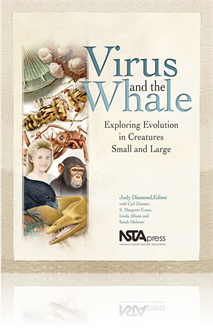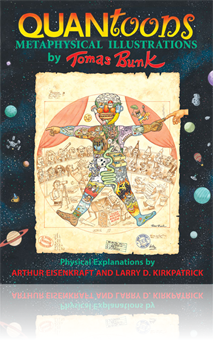All Book Chapters
Book Chapter
Galàpagos Finches: Famous Beaks
The Galàpagos Islands are a cluster of extremely remote active volcanic islands in the Pacific Ocean. The Islands are home to 13 species of finches. In this chapter, learn how conducting fieldwork on Galàpagos finches has caused scientists to rethi...
Book Chapter
Humans & Chimps: All in the Family
No one would mistake you for a chimpanzee. As for humans, there is no one like us on Earth, right? Wrong, scientists were surprised to learn from DNA studies that humans are genetically very similar to chimps. This chapter compares the DNA of humans ...
Book Chapter
Whales with knees and toes? Incredible as it seems, whales once walked on legs and lived on land. Millions of years of biological change have erased the whale's legs from its body, but a faint trace remains. Hidden inside the streamlined body of many...
Book Chapter
A person, place, or thing is what usually sparks those first memorable childhood impressions. Of course, we often do not study our newfound interests from the time of our personal enlightenment to adulthood, but early childhood interests are strong a...
Book Chapter
In this chapter, leaving light behind you enter the world of slow-moving mollusks. A snail must get from one corner of a room (dimensions 5 m × 10 m × 15 m) to the diagonally opposite corner in the least time. The snail can walk on any of the four...
Book Chapter
The September 1991 discovery of a frozen body in the Tirolean Alps revived interest in radiocarbon dating. This chapter is based on this discovery, assuming you have an isolated 1-g sample of carbon from a frozen animal and that the atmospheric ratio...
Book Chapter
The magnetic force is strange and does not exist for neutral particles—only for charged particles, if those particles are moving. The direction of the force isn’t toward the magnetic field or away from the field but “sideways.” This magneti...
Book Chapter
This chapter presents an example of a classic physics problem known as Atwood’s machine. In the lab it serves as a means of achieving a constant acceleration of any value less than g. Can you suggest a means of achieving a constant acceleration gr...
Book Chapter
At the XXIV International Physics Olympiad, held in Williamsburg, Virginia, students from 41 countries spent a day investigating the physics of amusement park rides. This article features a design challenge with a traditional physics problem descri...
Book Chapter
Stop on red, go on green . . .
When you're driving down a road and you see a yellow light, don’t you wonder when the light will turn red? As you drive down the road at a certain speed, the light may turn from green to yellow. A decision must be made to keep going or to come to a...
Book Chapter
This chapter is based on one of the theoretical problems given at the XXIV International Physics Olympiad. It is an actual application of physics to a real-world situation based on Gauss’s law—one of the most fundamental laws of electricity and...
Book Chapter
How can someone levitate an object? Magicians do it all the time. Can physicists do it as well? The easiest technique is to attach a string to the object and secure the string to the ceiling. The weight of the object is balanced by the tension in t...
Book Chapter
“It’s done with mirrors.” Whether we attend magic shows or ride the “Haunted Mansion,” we are often surprised and pleased by clever manipulations of images. This chapter looks at the image produced by a concave mirror filled with water. ...
Book Chapter
Supposedly young people are first introduced to waves while attending or watching sports events. These stadium waves can provide some useful insights into the most counterintuitive property of waves—the wave moves, but the medium does not. This cha...
Book Chapter
The motion of simple pendulums has played an interesting role in physics and technology. The simplest pendulum to study would probably be a compact mass attached to a long string. Physicists call this “the simple pendulum.” In this chapter, we st...




